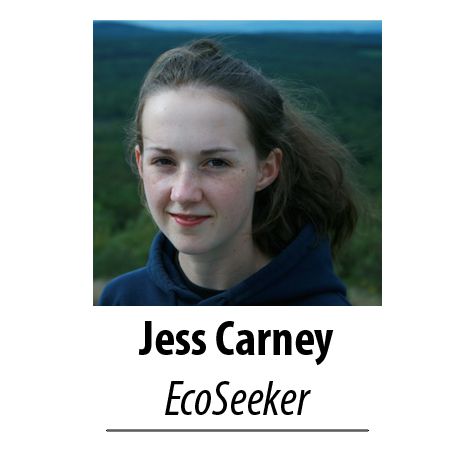
The Intergovernmental Panel on Climate Change (IPCC) is a collaboration between thousands of unpaid experts from all over the world. It bases its findings only on scientific data and as such is now considered to be the leading authority on climate change. Every few years it reviews and assesses current research and relevant information to release a report summarizing the state of climate change and its potential environmental and societal impacts. According to the IPCC, average global temperature has already increased by 0.85°C since 1880. Sea ice extent has decreased by 3.5 to 4.1 percent every decade since 1979 and, as a result, the average sea level has risen by 0.19 meters.
This is due primarily to the rise in anthropogenic greenhouse gas emissions, which are emissions created by human activity.
This rise is not naturally occurring because, although the climate has changed in the past, it has never changed as drastically as it is doing so now.
The Mauna Loa Observatory has been recording data of atmospheric CO2 concentration since 1956 and has shown that since that time the amount of CO2 in the atmosphere has consistently risen. In the decade from 1995 to 2004, the average annual increase was 1.9 parts per million (ppm) per year, while from 2005 to 2014 the average climbed to 2.1 ppm per year.
Climate scientists agree that in order to avoid catastrophic consequences, atmospheric concentration of CO2 must remain below 350 ppm; Currently it is at 399 ppm.
In 1998, an ice core sample was taken from the Vostok Station in Antarctica. The ice reached down 3,623 meters and represented over 400,000 years of Earth’s climate. Analysis of the sample revealed four major climate cycles between glacial and interglacial periods. In those cycles, temperature and CO2 concentration were closely correlated. Although these cycles marked periods of significant changes in temperature and CO2 concentration, the CO2 never reached above 300 ppm, and the rate of increase in CO2 concentration was far slower than that which is currently being observed.
The results of today’s increased CO2 concentration are already being observed. Variations in temperature and precipitation have altered ecosystems enough to harm wild species of plants and animals and to negatively impact agricultural yields.
Weather extremes, such as droughts, floods and severe storms, have increased in severity and frequency, leading to strains on human social, economic and political systems and causing countless injuries and even death.
It may be difficult to measure these changes as precisely as CO2 concentration, and in a system as complex as Earth it is impossible to track cause and effect exactly, but when the situation is viewed as a whole, considering climate change in the past and the influence of human activity in the present, the connection is quite clear. The current consequences of climate change are concerning, but in the future the situation will be much worse.
The IPCC’s Fifth Assessment Report was released in 2014. This report stated that the average global surface temperature is likely to rise 1.1-3.1°C by the end of the 21st century, but it could rise as much as 4.8°C. It also projected that throughout the next century, glacier volume will likely decrease by 35 to 55 percent, although a decrease of 85 percent is possible. This would result in a 0.45 to 0.55 meter increase in sea level and possibly even a decrease in sea level of 0.82 meters.
The differences in these estimates depend on the level of human intervention. However, even with a complete end to anthropogenic greenhouse gas emissions, the stabilization of Earth’s temperature will be delayed for hundreds of years.
Still, stabilization in temperatures will not necessarily create stabilization for Earth’s ecology or for human society because the complexity of each system will likely lead to a domino effect of irreversible and unpredictable changes. The report went on to say that many species are at higher risk of extinction within this century, and it evaluated the impact of climate change on several resources that are needed to support human populations.
“Climate change is projected to undermine food security and reduce renewable surface and groundwater resources,” the report stated.
Climate change must be taken seriously because the consequences are real, and they will affect everyone sooner than you might think. If you understand this, then you are already well on your way to making a positive impact, but how should you react in the face of all this information? It is easy to become overwhelmed and give up, to declare the problem too difficult for one person to tackle and simply do nothing. I assure you that is definitely not the answer. Climate change is a global issue, which means that the solution will require participation from everyone and, more importantly, that the solution is not a singular one. Society can’t just “fix” climate change; Doing so will take many small acts of innovation and determination compounded over the coming centuries.
So, while it is important to understand the entire picture, you can’t dwell on this big picture. As an individual you have more influence than you realize, and even though you may not know where to start or how to make the best use of your effort, just know that small steps travel long distances.




